The evergreen hoya liana comes from such southern countries as Australia, Polynesia, and southeast Asia. It grows on the slopes of the mountains and trunks of various trees. Shiny oval or heart-shaped flower leaves are colored differently. They can be either dark green or bright, with various patterns.
In the premises, the meaty variety is most often grown. This plant with its six-meter shoots can decorate any wall. Wax ivy is characterized by lush flowering for a long time, so it is desirable in any apartment. At the same time, Hoya does not require special care at home and grows well in residential buildings and offices.
Content
Variety characteristics and species diversity
In the wild, there are about two hundred species of this attractive plant. In an apartment, it blooms near well-lit windows. Domestic varieties do not need to be carried to fresh air.
There are three large groups of hoya varieties:
- ampelous, drooping varieties;
- erect flowers;
- curly ivy.
Among domestic species, until recently, only a few representatives were common, but today there are much more. The photo shows how effective the wax ivy is and how fascinating it blooms.
Meaty hoya
This variety is a vine growing up to six meters long. The shiny fleshy leaves of the plant are oval or heart-shaped, and white umbrellas in the form of stars adorn pink crowns in the center. This species blooms luxuriantly from the beginning of spring to the very end of summer, filling the interior of the room with a pleasant aroma.
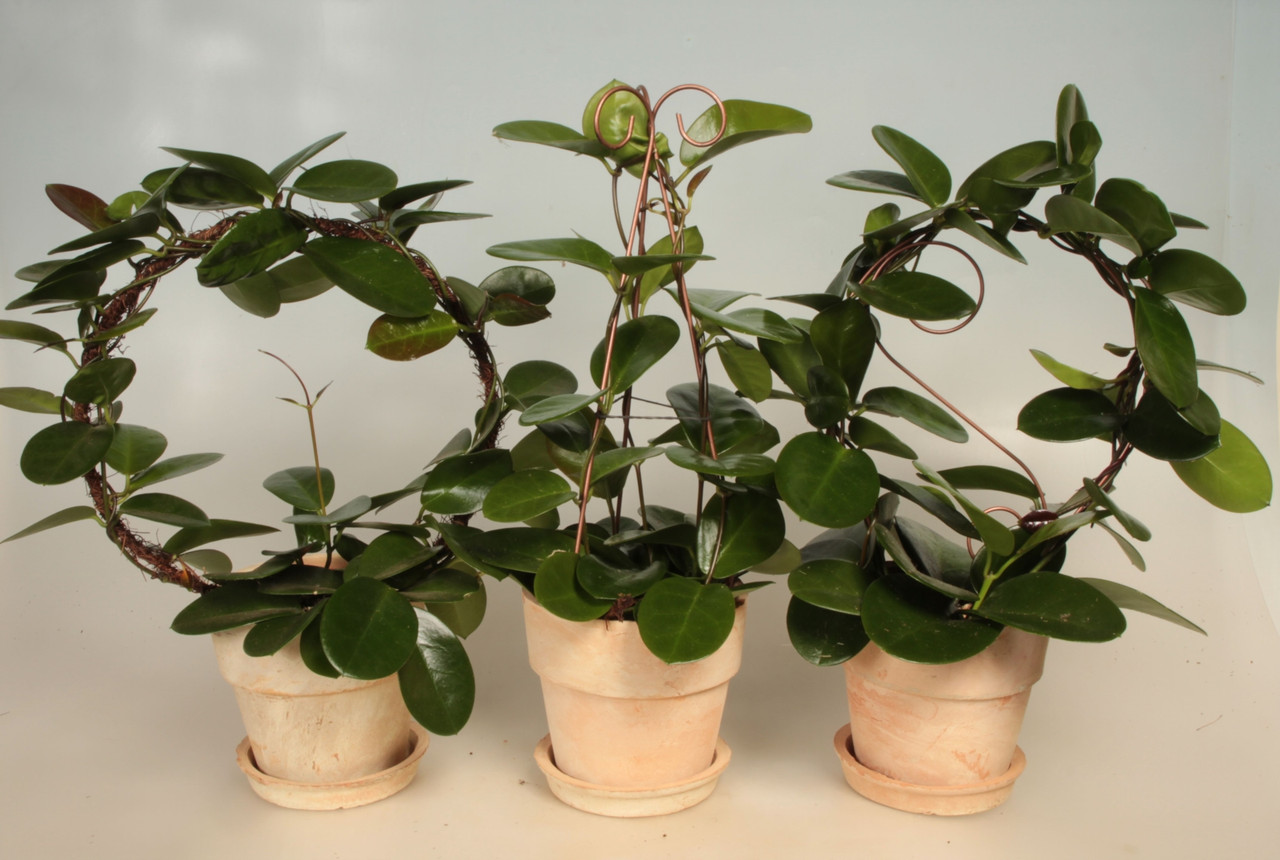
Majestic
Under natural conditions, the plant is found as a shrub with oblong oval leaves, which are located on the dropped cuttings. Purple stars of fragrant flowers with a white crown in the center are collected 6-10 pieces in neat umbrellas. This Hoya pleases with its flowering throughout the spring-summer period.
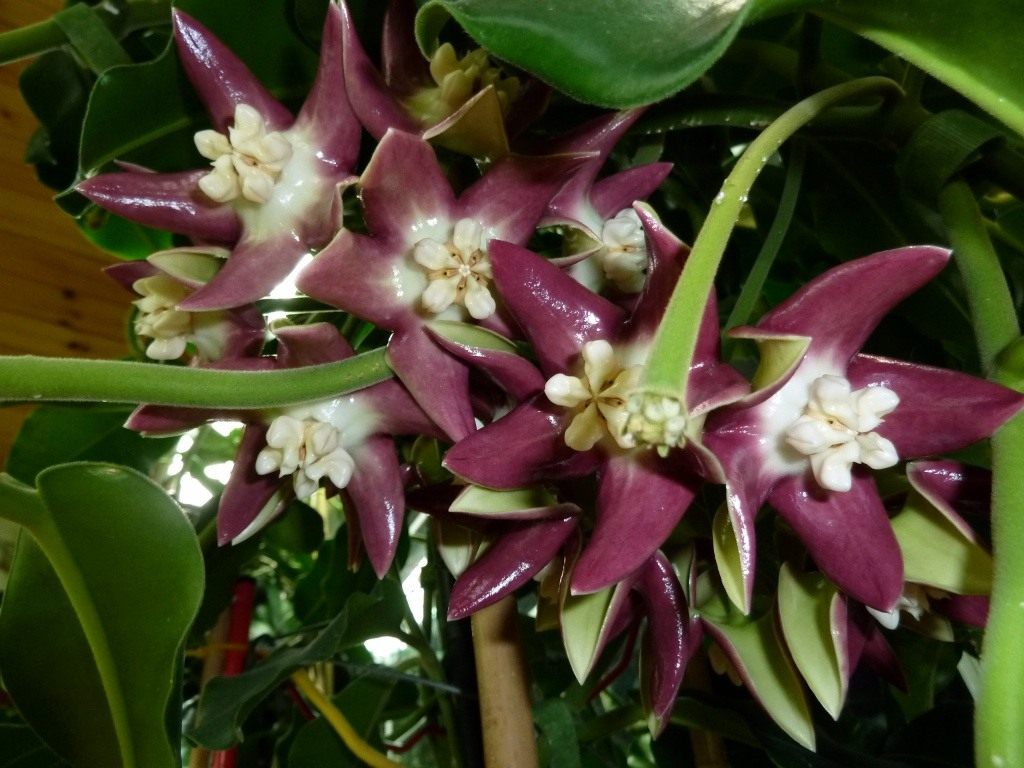
Concave
Twigs of this variety resemble cascading lashes with diamond-shaped leaves that have curved edges. At a young age, the shoots of this flower are characterized by a red-brown hue, but turn green over time. Flowers with a white fleecy corolla with a yellow middle form an inflorescence in the form of an umbrella.
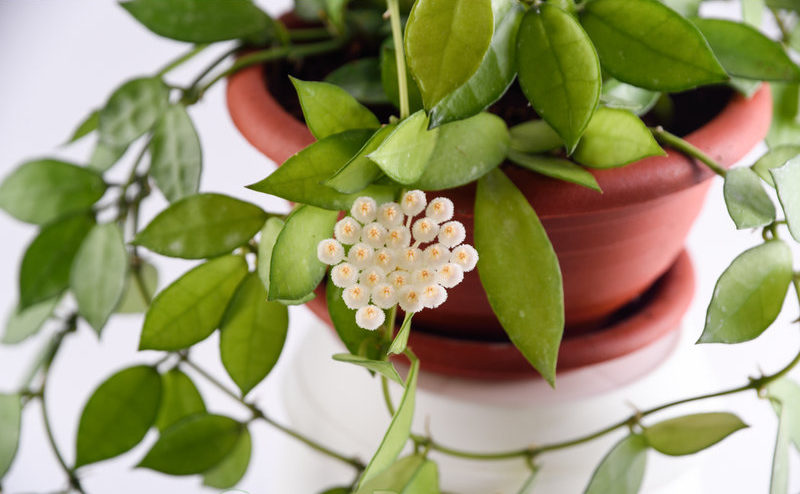
Multiflora
This beauty amazes many lovers of home gardening with lush flowering, an abundance of beautiful buds. If you place this plant on the eastern or western windows, and in winter use additional artificial lighting, then it will delight you with flowers in the form of miniature rockets with a lemon smell throughout the year.
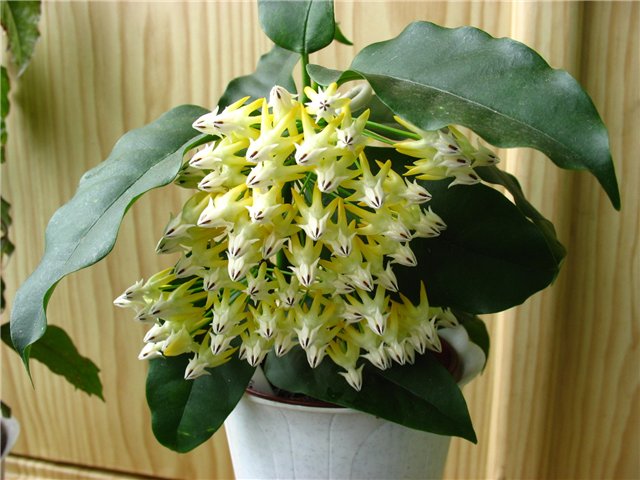
Multiflora grows in the form of a bush with large shiny leaves. New peduncles are laid with the leaves. Inflorescences contain 15-20 yellow-white flowers that bloom and last about 10 days. In this case, flowering can take place several times on one peduncle.
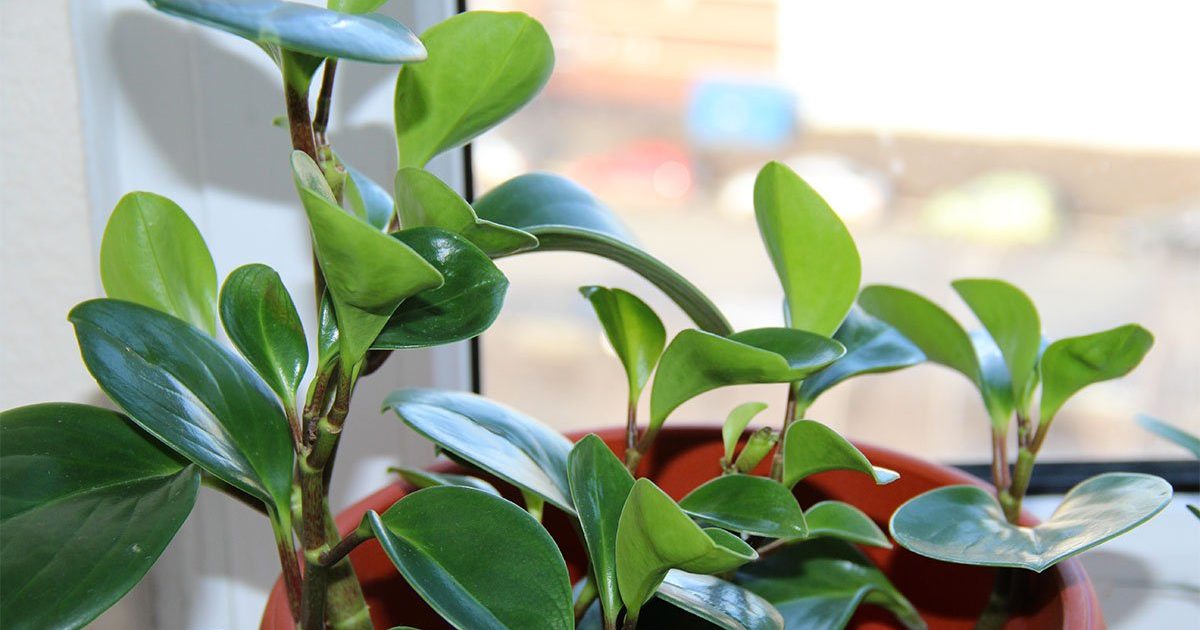 You may be interested in:
You may be interested in:Karnosa
This succulent liana has gained great popularity because of its unpretentiousness. It’s enough for her to prepare loose light soil, good in water and air, good lighting, and moderate watering. Karnosa is characterized by dark green leaves with silver blotches. Its umbrella inflorescence contains 15-20 flower stars decorated with a red corolla. The aroma of a flowering plant is greatly enhanced in the evening.
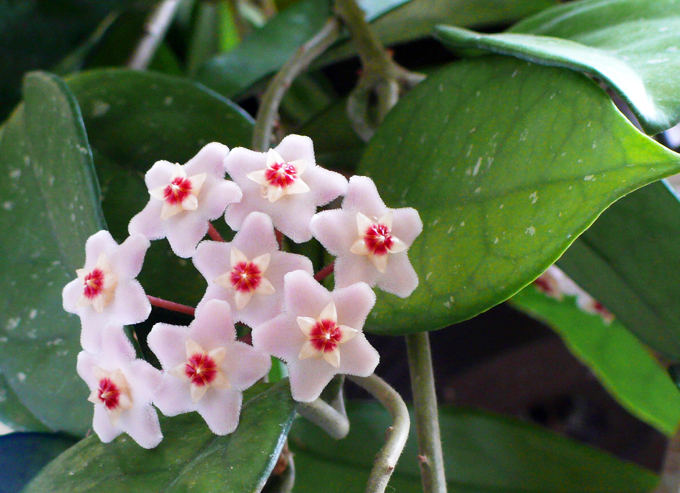
Bella
The beautiful Hoya is a shrub whose drooping stems are lushly dotted with small leaves. In nature, this epiphyte grows on tree branches of a rainforest. Bella got her name because of the beautiful flowers in the form of small white stars with a purple crown in the center. One umbrella inflorescence contains 7-9 flowers. This plant feels good in moderate light, high humidity, uniform temperature throughout the year.
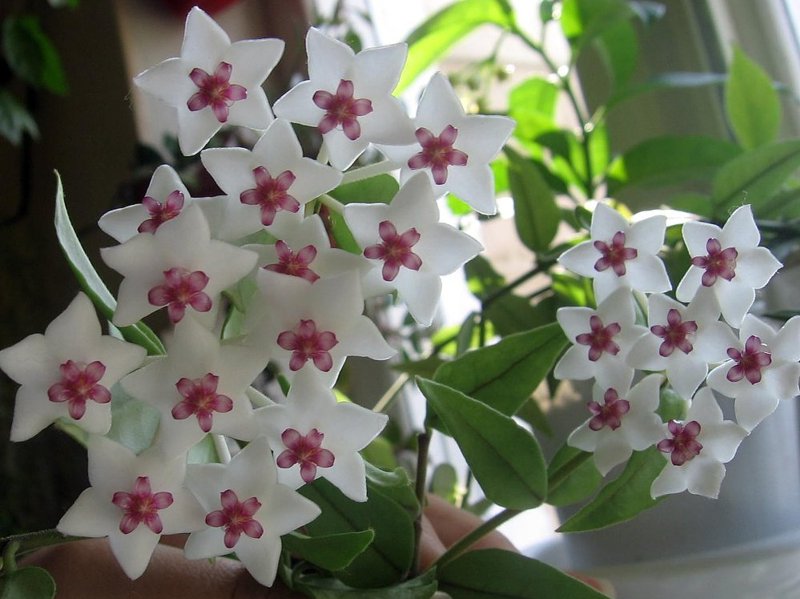
Kerry
A distinctive feature of this species are heart-shaped leaves, which is why it is often called "Valentine's Day". Downward-directed flowers are collected in inflorescences of spherical shape of 15-25 pieces. Yellow, pink, white color directly depends on the illumination of the room. As Kerry grows and ages, the color of the flowers gets darker. This is due to nectar. Often, falling stems with large leaves have to be tied.
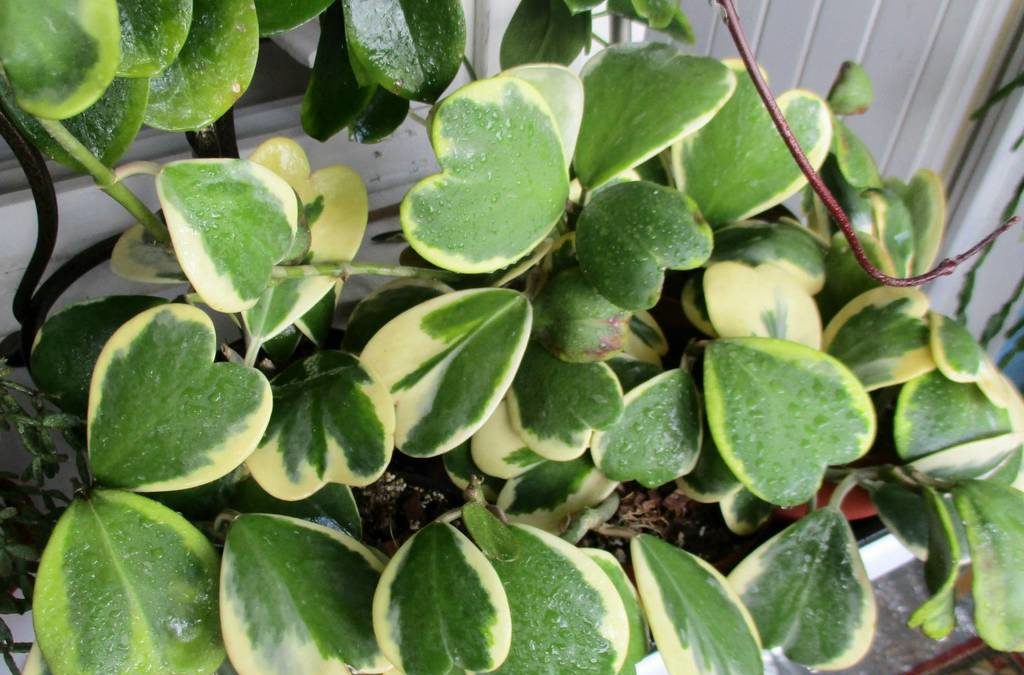
Tricolor
The tricolor variety of Hoya is distinguished by differently colored thick leaves with white or pink veins. This beautiful hardy plant throughout the year releases new inflorescences in the form of umbrellas. Tricolor pleases with a wonderful aroma of beautiful scarlet flowers. This plant tolerates winter well, it can bloom for decades, striking in its beauty.
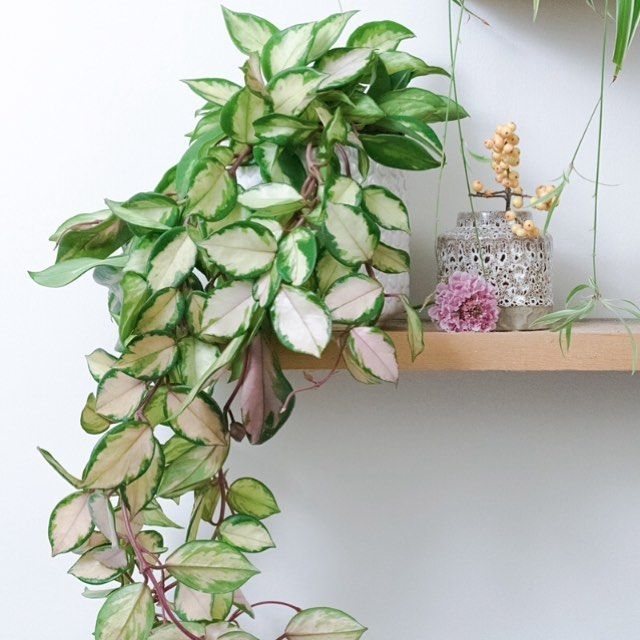
Compact
This kind of Hoya is distinguished by unusual twisted leaves. During flowering, Compacta forms spherical baskets that contain 25-30 fluffy pink flowers. This plant is characterized by unpretentiousness, good growth, beautiful flowering.

Hoya Care Rules at Home
The content of this plant in a house or apartment does not require increased attention. Growing Hoya and caring for it does not involve frequent watering, spraying, transplants. This flower grows well even in soil poor in nutrients.
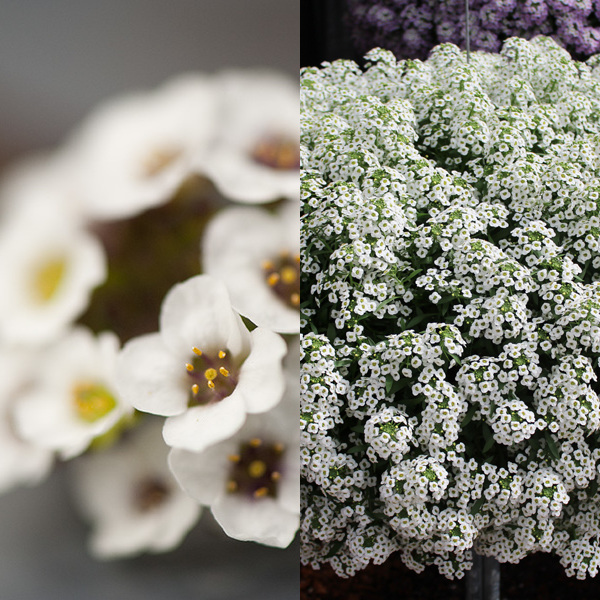 You may be interested in:
You may be interested in:Lighting and temperature
Hoya is a photophilous plant species. It is recommended to place it near the eastern or western windows. When growing on the south side in the afternoon, it is better to protect the flower from direct sunlight. Some varieties of this plant need sunlight in different ways. For example, specimens with thin leaves require diffuse lighting, partial shade, and also the humidity of the earth coma.
Species with light green leaves lowered down need more sunlight. Representatives who have a darker color of foliage prefer shade. A newly acquired plant needs to be trained in sunlight slowly and carefully. On the other hand, insufficient lighting directly affects the flowering of this species.
The optimal summer temperature for the plant is a range of 22-25 degrees Celsius. In winter, the air should not cool below 15 degrees Celsius, as some species can be severely damaged.For example, Hoya Bella loses leaves from the cold. On the other hand, winter temperatures above 20 degrees will negatively affect the flowering of the plant.
Watering and fertilizer
Although Hoya has no obvious dormant period when grown at home, it is recommended to reduce watering and stop fertilizing the soil when it slows down. This usually occurs with a significant decrease in daylight hours.
During the period of active growth from March to October, this home flower needs to be abundantly watered. To do this, it is recommended to use soft, settled water just above room temperature. Orientation should be on the drying out of the topsoil. From November to March, watering is reduced.
Despite the fact that the plant does not require air humidification, in the hot season, its leaves can be sprayed. In this case, the main thing is to prevent water from getting on the flowers. In the spring-summer period, approximately twice a month, you need to feed the flower using complex mineral fertilizers. In winter and autumn this is not required.
Pruning
Although such procedures are not vital to Hoya, her branches should be cut regularly. With the help of such measures, you can make the plant more magnificent, branched, form its crown. When choosing a pot, you need to give preference to a heavy tank. This will avoid overturning it. The liana itself stretches along the threads stretched around the pot in the selected direction.
For work, it is better to use a secateurs, with which to cut the stem between the nodules. Such actions are recommended to be carried out after the appearance of four leaves on the branches. Keep in mind that this plant is poisonous. The rich smell of flowers often causes headaches, and physical contact with leaves can provoke inflammatory processes of the skin.
Diseases and Pests
Almost all domestic species of Hoya are characterized by good resistance to pests and diseases. If in the process of growing a plant when caring for it, obvious violations are associated with drying out the soil, too high air temperature, then the likelihood of pests such as scale insects, red spider mites increases.
In such cases, it is recommended to wipe the leaves of the flower with a sponge with a soapy solution, treat them with insecticides. In addition, some types of nematodes can affect the root system. To avoid this, a new substrate should be steamed before transplantation.
Possible problems with the growth and development of the flower, their causes, solutions are summarized in the following table:
| Pathological disorders | Possible causes of deviations | Solution |
|---|---|---|
| Spots on the surface of the leaves | Sunburn, lighting flaws | Moving a plant to a brighter place |
| Lack of flowering | High winter temperature, insufficient light | Shower with warm water to stimulate |
| Foliage falling | Excessive moisture, strong soil cooling | Normalize watering, move the flower to another place |
| Twisting, drying, lightening leaves | Bright strong sun | Move to shadow |
| Blanching of leaves, growth retardation | Depleted soil | Transplant a plant |
| Fall of flowers, buds | Dry air too hot | Create a more suitable microclimate |
Breeding
You can get this plant from seeds, although this method is rarely used. To do this, ripened and well-dried seeds after collection are placed in loose soil, which contains crushed moss sphagnum and earth mix.
A week after the appearance of the first seedlings, provide moderate substrate moisture. Place a container with sprouts in a warm, well-lit place. To prevent fungal diseases, it is recommended to treat the soil with a solution containing copper.After about three months, you can transplant sprouted leaves into separate pots.

Since it is difficult to obtain seeds at home, propagation by cuttings is an easier way. They should be short, but have 2-4 leaves. Root material can be in water or soil. For the first option, you need to use a container wrapped on all sides with foil.
Only the upper leaves should be left on the handle, and the lower part after processing the cut with the root hormone should be placed in water so that the lower node is flooded. It is recommended to wear a plastic bag on top to increase humidity. After about 2 weeks, you need to transplant the plant to a permanent place.
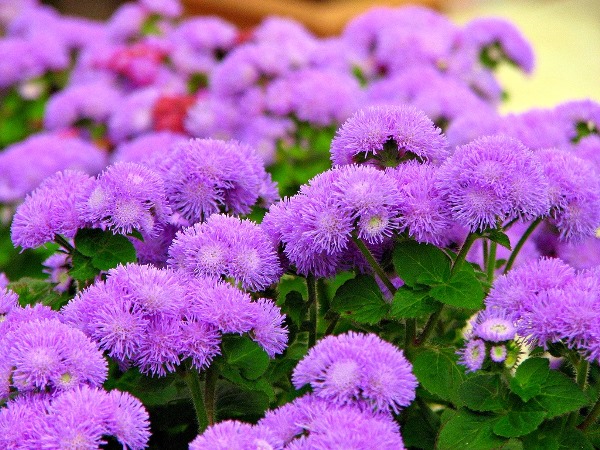 You may be interested in:
You may be interested in:Transplant Rules
Due to the growth rate, young plants are recommended to be replanted every spring. Adult specimens need a soil change once every three years. Hoya feels good in a neutral substrate. You can use a universal substrate for home flowering plants.
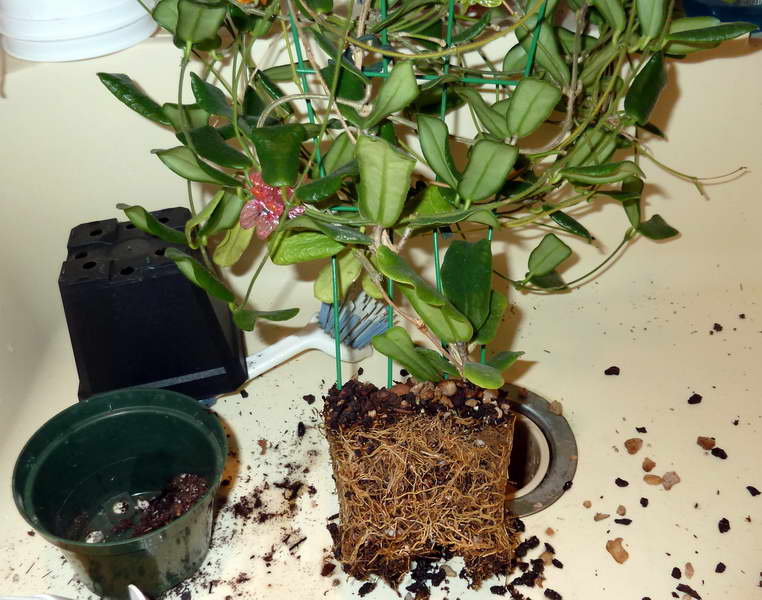
It is important to form a good drainage layer of expanded clay or broken brick at the bottom. This will prevent stagnation of water. For transplantation, it is recommended to use only a new pot with drainage holes in the bottom, carefully washing it before doing so with soap. To stimulate flowering, a close container should be used, and for the active growth of shoots, a more spacious flowerpot is required.
Common Hoya Growing Questions
Hoya is an ornamental plant, which is great for vertical gardening of the interior space of houses and apartments. Proper care allows you to admire the blooming beauty almost all year round.

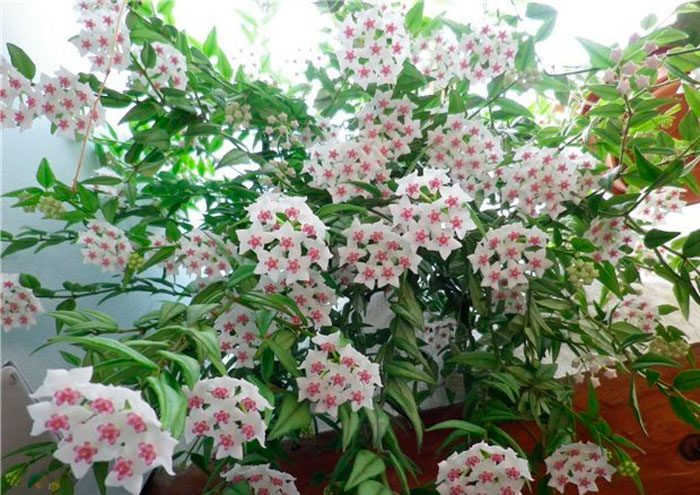
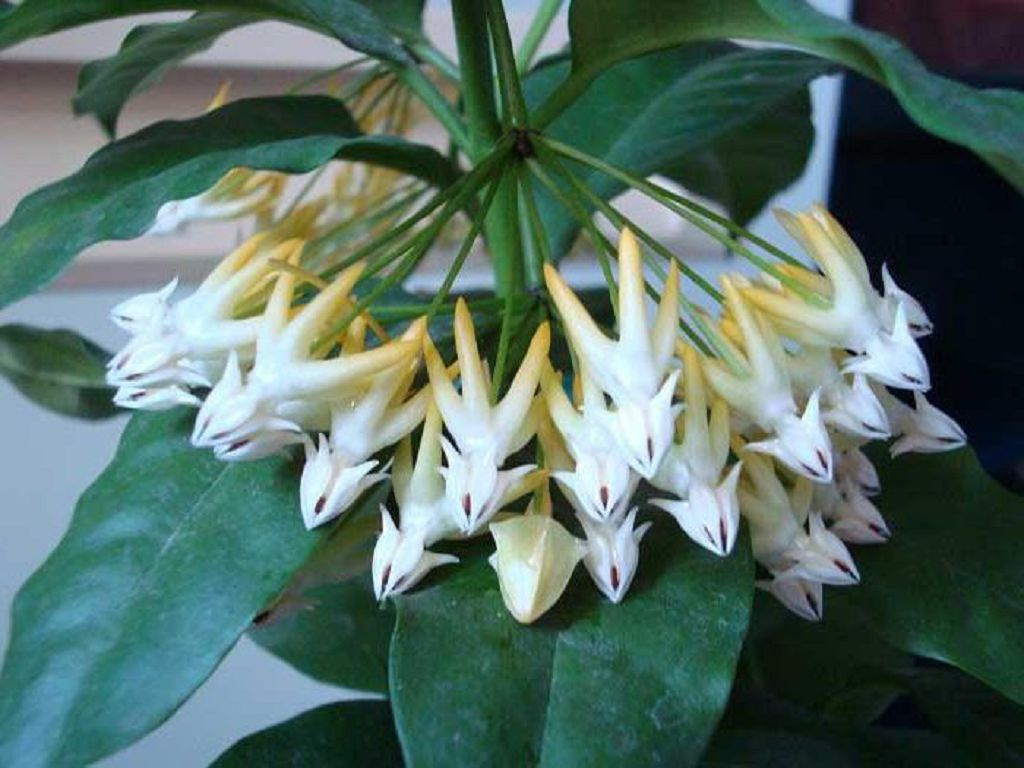
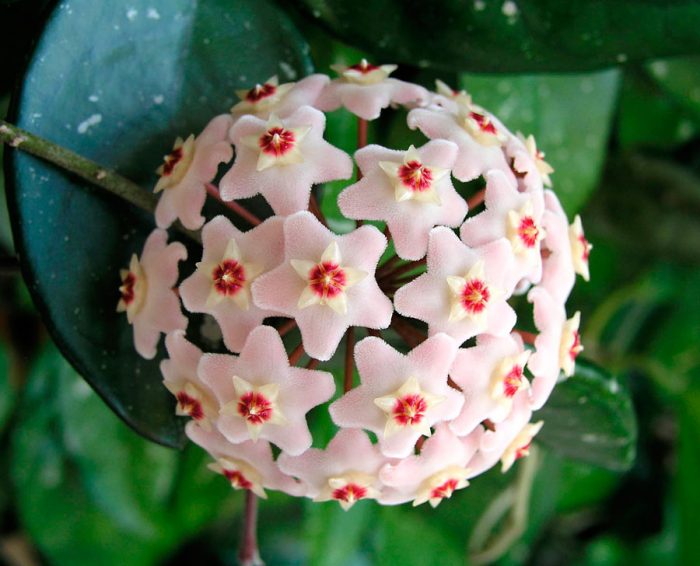



 Sow in the ground, without seedlings: 10 beautiful and unpretentious flowers
Sow in the ground, without seedlings: 10 beautiful and unpretentious flowers Platicodon planting and outdoor care
Platicodon planting and outdoor care Hosta - planting and care in the open ground in the Urals
Hosta - planting and care in the open ground in the Urals Oleander - care and growing at home
Oleander - care and growing at home